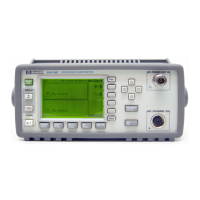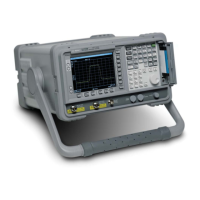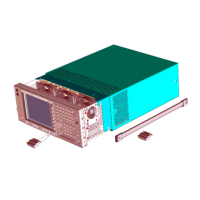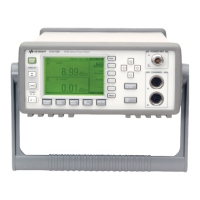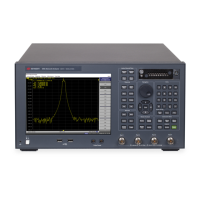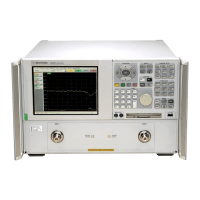24 Chapter 1
Introduction and Measurement Theory
Cable Impedance and Structural Return Loss Measurement Theory
of the cable. If the termination is shown as a fault, the reflection from the
terminating connector is contributing to the reflection from the cable. A more
suitable termination is required or a longer section of cable must be measured. The
cable must provide sufficient attenuation to remove the effects of the connector and
load for a good SRL measurement. Performing a good measurement on a short
length of cable is quite difficult and requires connectors with very low reflections to
be effective.
Fixed Bridge with Connector Compensation
The analyzer employs the fixed-bridge method and instrument software to emulate
the traditional variable-bridge method. Vector error correction is used to provide the
most accurate measurements up to the calibration plane defined by the calibration
standards. Additional corrections can also be used to minimize the effects of the
test-lead connector on the measured SRL response.
The error corrections done for a fixed bridge can also include connector
compensation. The fixed bridge method with connector compensation technique
mathematically removes the effects of the test-lead connector by compensating the
predicted connector response given by a connector model.
Shunt C Connector Model
One model that can be used for the cable connector is the shunt C connector model.
With this model, the adjustment of the C value given in a variable impedance bridge
can be emulated. The shunt C connector model assumes the discontinuity at the
interface is abrupt and much smaller than a half wavelength of the highest frequency
of measurement. With this assumption, the discontinuity can be modeled as a
single-shunt twisted pair, where C = C
0
+ second and third order terms.
Intuitively this is the right model to choose because the effect of a typical poor
connector on structural return loss measurement is an upward sloping response,
typically worst at the high frequencies.
Using a shunt C to model the connector, a value of the susceptance, −C, may be
chosen by the network analyzer to cancel the equivalent C of the connector and
mathematically minimize the effect of the connector on the response measurement.
The equations for computing structural return loss and the average cable impedance
with capacitive compensation are described next.
